

| In 1431 Luca della Robbia was commissioned to design a marble Cantoria over the door of the Sacristy of the Masses, also known as the New Sacristy. Two years after Luca della Robbia began the cantoria, Donatello was commissioned to design another Cantoria to be placed over the Old or Canons' Sacristy to form a counterpart to that sculpted by Robbia. Both of these singing galleries were dismantled, only to be reconstructed in the Duomo Museum. | ||
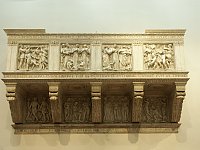
|
Luca's cantoria as a whole is a complete reconstruction with copies in the panels. The actual panels are now installed below the cantoria, making viewing much easier. The photographs below of individual panels are of the original panels. The upper part resembles a Roman sarcophagus supported by consoles. The architectural frame isolates four reliefs on the front and one on each end. Between the consoles there are four additional reliefs, though somewhat in shadow--less so now when separated from the whole structure. In general, Luca's figures are more polished and more highly finished than those in Donatello's cantoria. | |
| Psalm 150, the popular Laudate Dominum, is inscribed in three lines on the cantoria--on the cornice, the base of the parapet, and the base of the console. Some of the reliefs also illustrate verses in this Psalm. | ||
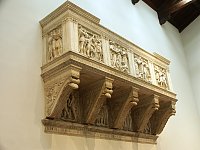
|
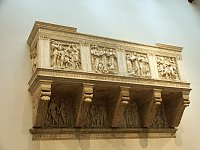
|
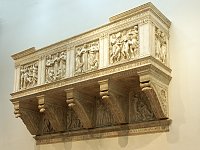
|
An end panel, far leftThis is an early relief. The later panels, because they are livelier, are generally thought to be better. |

|
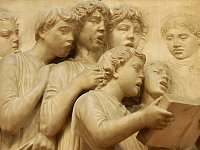
|
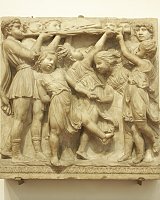
|
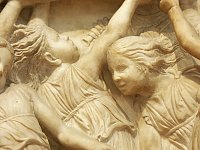
|
Top register, far leftThis panel illustrates the line in the Psalms which says "Praise him [the Lord] with sound of trumpet." |
Detail of trumpet player and dancing children |
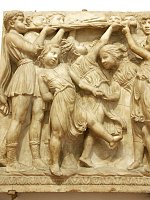
|
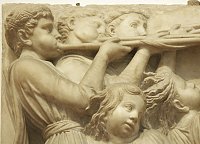
|
Top register, second from the left | ||

|
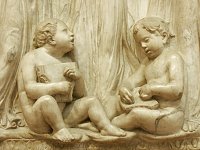
|

|
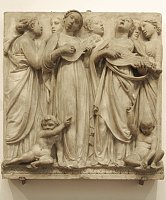
|
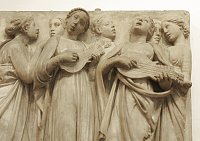
|
Top register, third from the left |
Top register, far right | ||
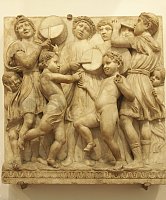
|
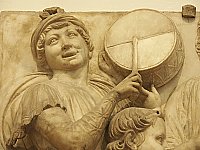
|
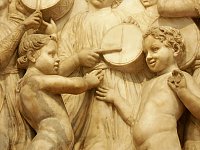
|
End panel, far rightThis is an early panel, less lively than later panels. |
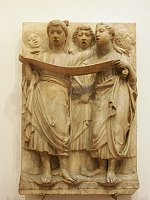
| |
 Click here to return to index of art historical sites.
Click here to return to index of art historical sites.
 Click here to return to index of artists and architects.
Click here to return to index of artists and architects.
 Click here to return to chronological index.
Click here to return to chronological index.
 Click here to see the home page of Bluffton University.
Click here to see the home page of Bluffton University.

